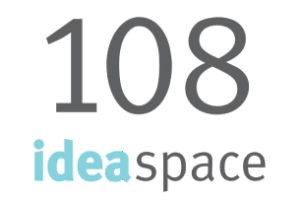There is an old “joke” in the web development world that is both funny and sad: What is the difference between a $20,000 website, a $200,000 website, and a $2 million one? Answer: The gullibility of the client.
In 24 years of building websites, we have yet to meet a gullible client, which is why this joke is so offensive. And if we did, we expect that they would “smell a fish” if they were presented with a nonsense proposal.
Yet surely there are differences between the cheapest websites, and the most expensive? Should you look at your website as a commodity, or as your most important strategic asset?
The cheapest sites are templated sites from consumer or small-business web hosting providers. These are offered “free” to serve as a barrier to cancelling the hosting contract; no one but the smallest solopreneurs use this option.
Next up are sites built on proprietary content management systems: rarely is there custom design here either. Special functionality (email lists, blogs, calendars, e-commerce) are usually sold as upgrade modules. The downsides of this approach include little design flexibility, the inability to add special functionality beyond the modules that are available, and vendor lock-in. Security is also a risk point. While this approach was popular 15+ years ago, most organizations don’t see it as a viable approach today.
At the “bottom” of the business-class website barrel are basic brochure sites: This usually means 5-10 pages, a blog, custom design work, basic site analytics and a site that is built on an open-source social platform such as WordPress or Drupal. Beyond this, it is simply a question of adding options – here is a partial list:
- Add responsive (eg mobile friendly) design
- Add compliance with accessibility legislation (eg WCAG 2.0 Level A or AA)
- Add strategy
- Add content creation (writing, or editing, or both)
- Add usability testing
- Add built-in SEO
- Add basic functionality (lead gen forms, calculators, etc)
- Add a separate development server
- Add connections with Social Media
- Add security and firewall
- Add stress-testing
- Add e-commerce
- Add multilingual support
- Add more advanced site analytics
- Add a persona-based strategy
- Add a staging site
- Add separate database and content servers
- Add members-only area and user management
- Add distributed content management and roles
- Add micro-sites and landing page management
- Add geolocation services
- Add a content delivery network
- Add training
- Add workflow and content approvals
- Add integration with Marketing Automation and/or CRM systems
- Add integration with ERP and/or financial systems
- Add advanced tracking and monitoring
- Add personalization, contextual content delivery
- Add advanced usability testing
- Add integrated analytics
- Add page-based optimization
- Add advanced SEO
- Add mobile app integration
- Add omni-channel support
- Add locally-hosted versions of the site in different continents
- Add advanced security and user authentication
- Add integration with an Extranet and Intranet
- Add monitoring and technical optimization
- Add consulting on governance
Beyond the specific features of the site, another driver of cost is the content: who writes it, who edits it, and who approves it. Connected with this is the total page count of the site: more pages mean more templates, more content loading time, more site testing and more graphics that need to be created, optimized, and loaded. Finally, the largest sites may be part of an organization’s digital transformation strategy. In these cases, the website is really the vector to drive process change, both internally and externally. All of this takes time and incurs cost.
Generally speaking, as more is expected of the website, the “optimal” platform changes to an industrial-strength – and significantly more costly – platform such as Adobe Experience Manager or Sitecore Experience Manager.
Yes, the simplest websites are fast becoming commodities; but user expectations, competitive pressures, and legislative requirements are also forcing many organizations to re-look at whether their current site is pulling its weight.
This week’s action plan: Except for the largest organizations, a $2 million website makes no sense. But a $20,000 website will also omit many key capabilities, dead-end others, and likely expose the organization to undue risk. This week, compare your website with your competitors: have they made a different investment decision than you did? And what has been the result?











